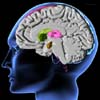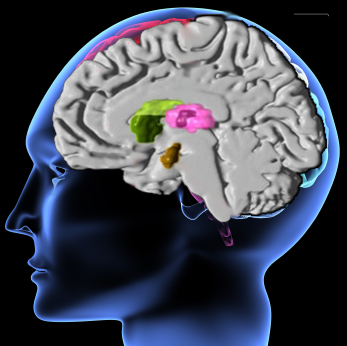Study links Gulf War exposures, brain changes
SMU statistical scientists are part of a new study that suggests veterans exposed to neurotoxins suffer changes in their brains.

By Kelly Kennedy
Air Force Times Staff Writer
A new study of veterans of the 1991 Gulf War suggests that exposure to neurotoxins such as anti-nerve agent pills, insect repellent and Sarin caused neurological changes to the brain.
 Related Links:
|
However, brain imaging shows those changes appear to differ depending on what and how much each person was exposed to. The changes also correspond to different sets of symptoms.
Researchers at the University of Texas Southwestern Medical Center, Southern Methodist University, and the Veterans Affairs Medical Center in Dallas performed digital brain scans on 21 chronically ill Gulf War veterans from the same Naval Reserve construction battalion, all of whom had symptoms of “Gulf War syndrome.”
According to a study published in Psychiatry Research: Neuroimaging Journal, previous studies defined three categories of symptoms associated with Gulf War veterans:
- Complex 1: mild cognitive problems, such as distractibility, forgetfulness, feeling depressed, and excessive daytime sleepiness.
- Complex 2: a more debilitating state with confusion and a gross lack of muscle coordination.
- Complex 3: continuous joint and muscle aching.
The three complexes suggest “an overall syndrome with variants,” according to the researchers. But they also found the variants depended on what the vets had been exposed to: Complex 1 was associated with troops who had worn flea collars to ward off sand fleas; Complex 2 — the most disabling of the three — was associated with low-level Sarin exposure and anti-nerve agent pills; and Complex 3 was associated with insect repellent and anti-nerve agent pills.
In new study, researchers wanted to see how brain blood flow in the veterans changed if they were exposed to a cholinesterase-inhibiting chemical. All the Gulf War exposures — insect repellent, anti-nerve agent pills (pyridostigmine) and Sarin — are such cholinesterase-inhibiting chemicals, and the researchers wanted to see if the previous exposure permanently damaged the way the brain works.
Previous studies also had found that some people are genetically less able to process such chemicals out of their bodies, which could explain why some troops exposed to the same chemicals have no symptoms.
Research has shown that vets exposed to Sarin gas had a lower volume of white matter than people who had not been exposed, and that their fine motor skills were comparable to someone 10 years older than the exposed veterans.
The new study, which the researchers were quick to point out was small, included 11 men with Complex 2 symptoms, five with Complex 1 symptoms, and five with Complex 3 symptoms.
For the study, they injected each veteran with saline solution through an IV, then performed a digital brain scan to check cerebral blood flow. Two days later, they used an IV to send 2 milligrams of physostigmine, another cholinesterase-inhibiting chemical, into their systems.
Robert Haley, lead researcher on the study, wrote that they expected the brain activity of the exposed veterans to respond differently to the chemical than a control group of civilians did, and they were correct.
But they were surprised that the veterans’ brains responded differently to the saline, as well as to the physostigmine, based on which symptom complex they fell into. They differed significantly on baseline blood flow after the saline, with the Complex 2 group having significantly less than the control group.
But after the injection of physostigmine, both the Complex 1 and 3 groups had a slight reduction in blood flow in some regions of the brain, while the Complex 2 group had an increase. There were differences in the areas of the deep brain where the researchers saw reductions of blood flow based on which group they were looking at.
The findings seem consistent with the “impaired cognition, attentional deficits, reduced intellectual functioning, audiovestibular dysfunction and emotional changes” in Complex 1 and 2 veterans, versus the “primary pain and sensory dysfunction” of Complex 3 veterans, the study states.
The Complex 2 patterns were similar to those found in Alzheimer’s disease, but were obviously not the same because of the pattern of the symptoms, they wrote.
“Our findings further suggest that milder-symptom Complexes 1 and 3 involve different neuropathologic mechanisms from those underlying the more severe-symptom Complex 2,” the study states. “This condition might be appropriately referred to as an encephalopathy — a term for any diffuse disease of the brain that alters brain function or structure.”
They said the brain scans could provide an “objective diagnostic test” for war-related chronic encephalopathic illnesses.
# # #